2018 Spring Symposium Recap
Wednesday, April 25th 2018 brought with it the usual pleasantries of a rainy city day: Puddles on sidewalks and streets, spattering rain, and wind. Yet, the room for the first Spring Symposium of the Boston University Graduate Program in Urban Biogeoscience and Environmental Health was packed! The 58 attendees from across the Boston University campus (12 departments and centers at BU) and three external organizations (Foundation for a Greener Future, UMass Boston, and Davis Square Research Associates) were excited to hear lightning style talks that emphasized the cross-cutting nature of the two core disciplines that are the backbone of the new graduate program, Biogeoscience and Environmental Health. The talks focused on Climate, Air, Noise and Stressors, Land Use, and Water.
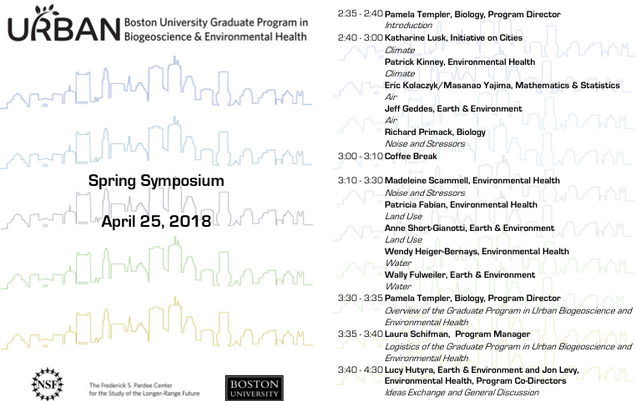
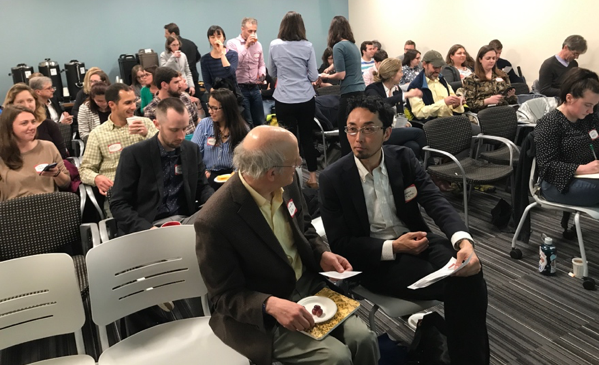
Multiple Disciplines, one problem.
The field of Biogeoscience is focused on understanding how the Earth’s atmosphere, biosphere, hydrosphere, and geosphere interact and Environmental Health is concerned with preventing exposure to hazardous conditions and protecting human health. So how do we tackle issues around climate, air, noise and stressors, land use, and water together? Our speakers gave some great ideas and valuable background information on how to get started.
Pamela Templer, Professor of Biology and Director of the Graduate Program in Urban Biogeoscience and Environmental Health, introduced the program and explained the motivation behind bringing together Biogeoscience, Environmental Health, and Statistics to tackle urban challenges.
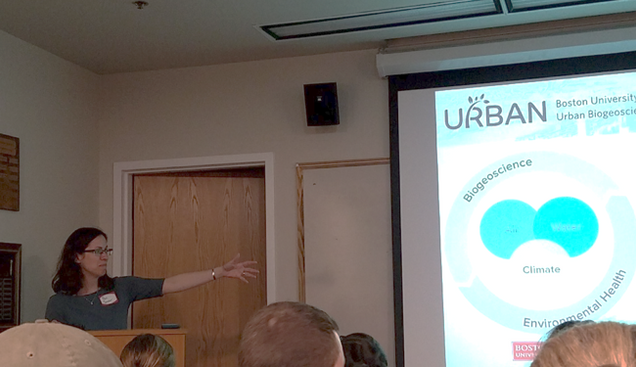
Katharine Lusk of the BU Initiative on Cities presented the political dimensions of climate policy and how US mayors would tackle climate change in a world of unlimited funds.
Patrick Kinney, Professor of Environmental Health, makes the link between climate and health and introduces the term health dividends to emphasize the positive impacts of mitigating climate change.
Masanao Yajima, Assistant Professor of Mathematics and Statistics, highlights the extraordinary resource that faculty and students of the MSSP program provide to create cross-departmental collaborations and statistical support.
Jeff Geddes, Assistant Professor of Earth and Environment, explains the value in remote sensing as a tool for understanding air quality in cities.
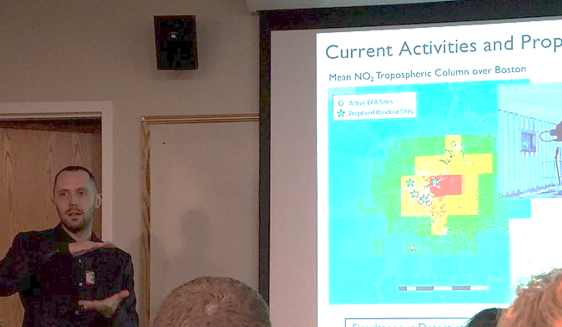
Richard Primack, Professor of Biology, shows how citizen science and outreach opportunities can be linked with scientific studies to understand noise pollution in urban and natural areas.
Madeleine Scammell, Associate Professor of Environmental Health, elaborates on how noise pollution can impact human health by relating her own story – she wakes up frequently from approaching airplanes that pass over her house in Chelsea, MA.
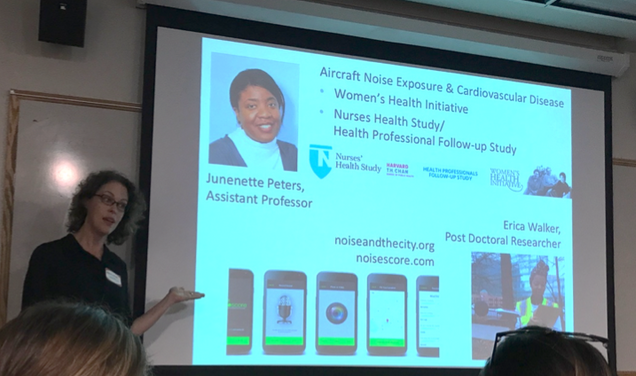
Patricia Fabian, Research Assistant Professor of Environmental Health, relates how land use data can help identify environmental health disparities among race, age, education, and income in urban neighborhoods.
Anne Short Gianotti, Assistant Professor of Earth and Environment, investigates how management decisions and policy influence ecological and environmental justice outcomes in urban areas.
Wendy Heiger-Bernays, Clinical Professor of Environmental Health, relates how contaminants in drinking water pose a threat to citizens of Boston due to aging infrastructure.
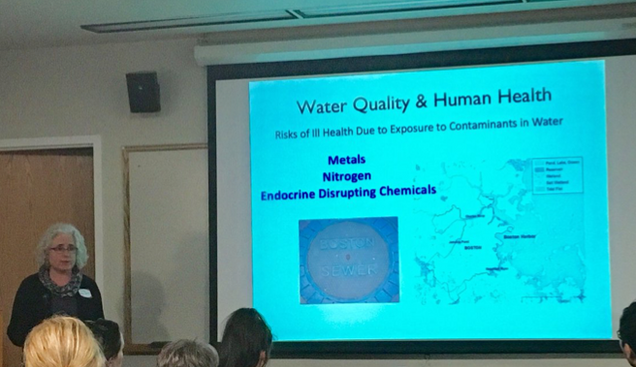
Wally Fulweiler, Associate Professor of Earth and Environment and Biology, tells us about the success story of Boston Harbor, but remarks that there is plenty of remaining work, particularly related to emerging contaminants.
Moving on to Find Solutions
Our break-out groups included collaborative ideas to examine multiple topics, including better understanding of spatio-temporal variation to both human and vegetation exposures; incorporating citizen science and engagement to collect data across neighborhoods and cities; creating real-time information portals that inform citizens about stressors and how to avoid them; and quantifying the benefits of green spaces for biogeochemical cycling and environmental health.

The great turnout, engaged audience, and expertise represented from various departments around and beyond Boston University made this event a huge success. Not only did we reach our audience in the room, but with the help of Twitter and our hashtag #BU_URBAN, 142 tweets made by 32 tweeters reached more than 36,000 people and made upwards of 87,400 impressions. We can’t wait for the incoming cohort of students to get started on tackling some urban environmental problems, so stay tuned for updates!